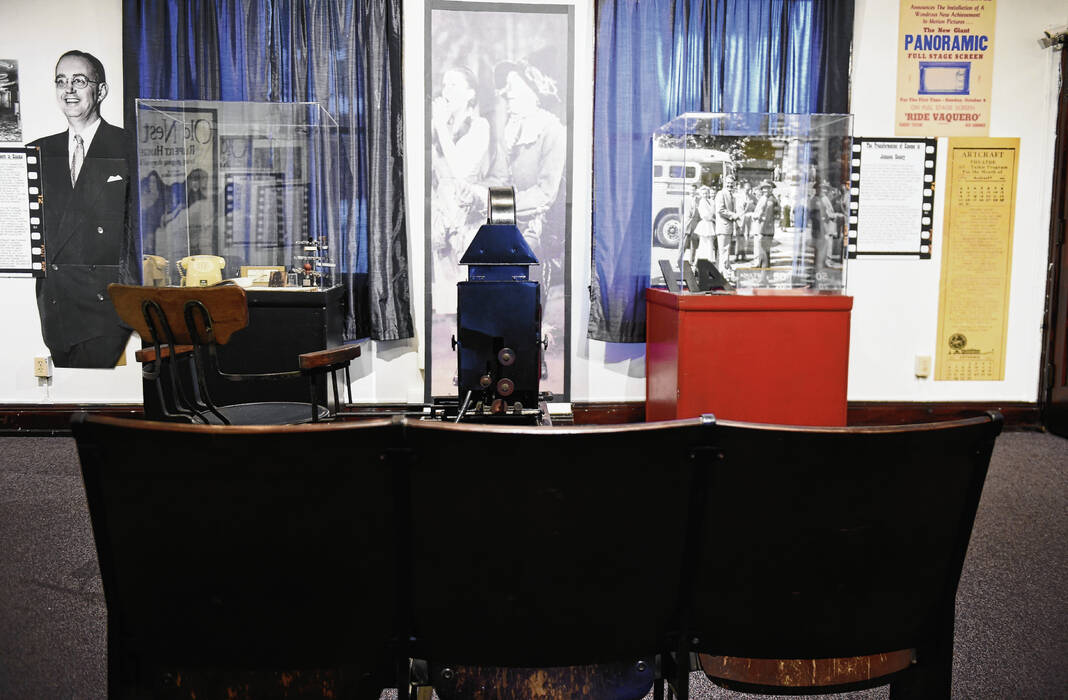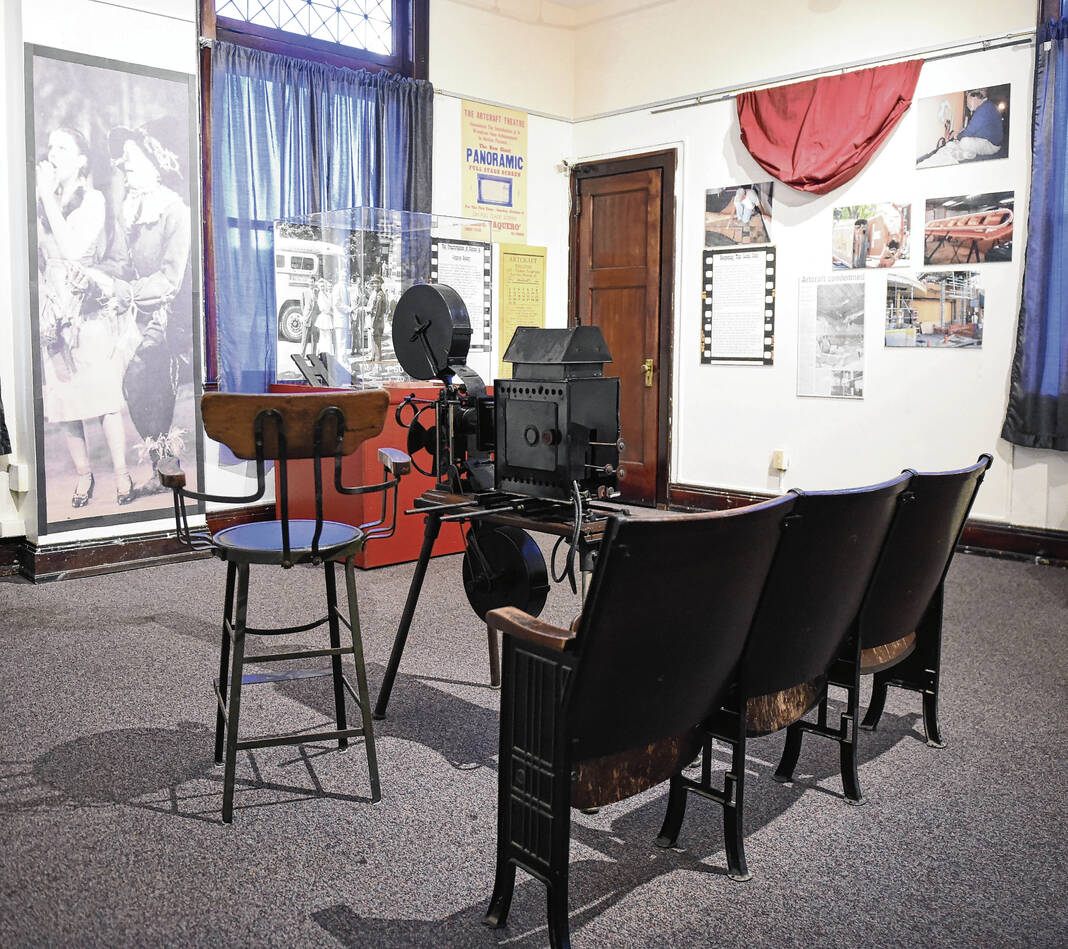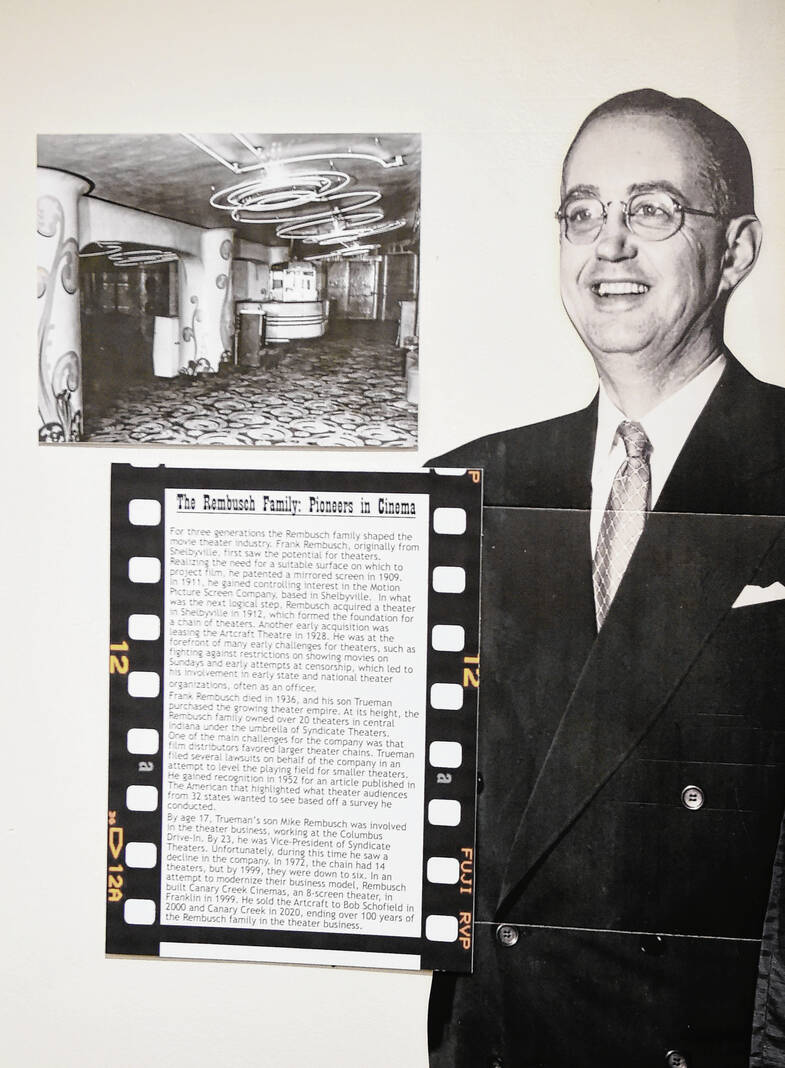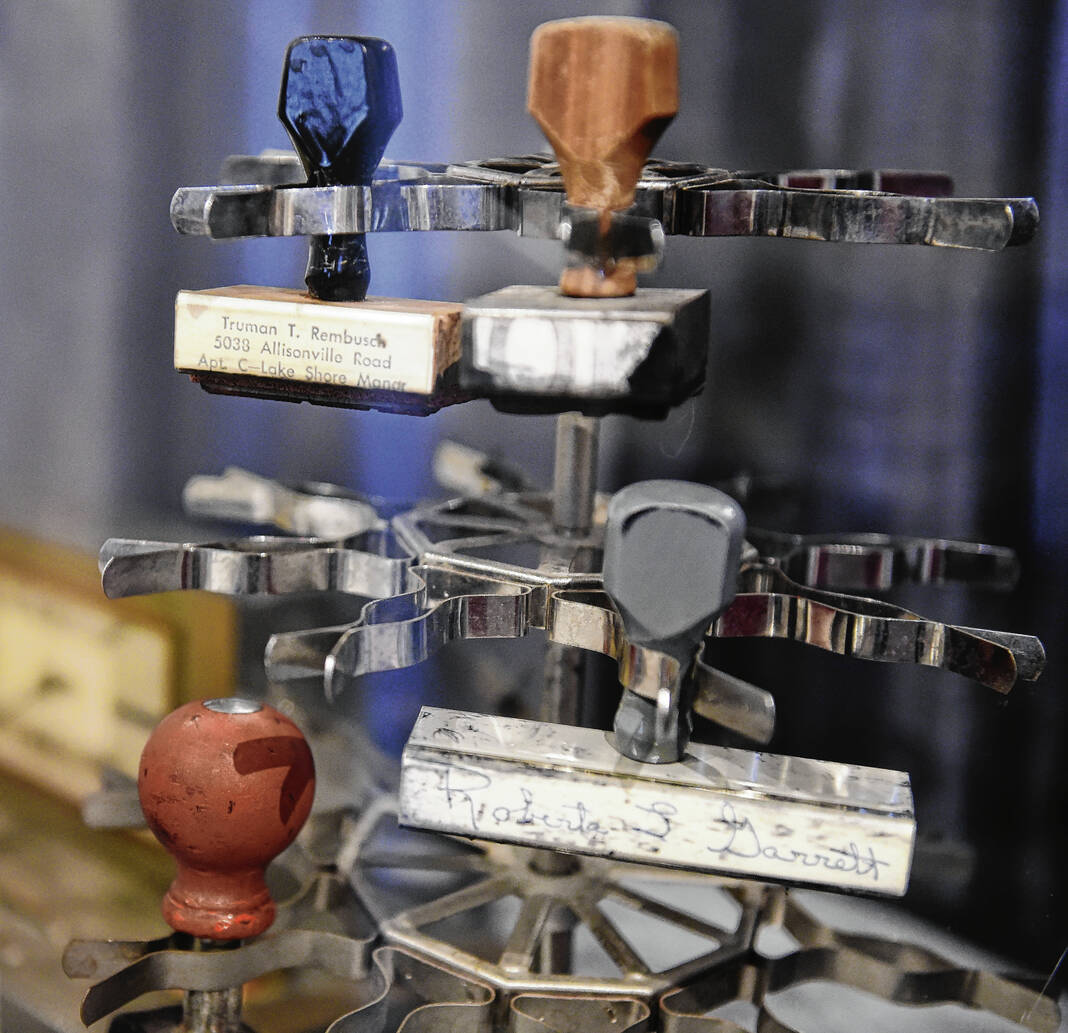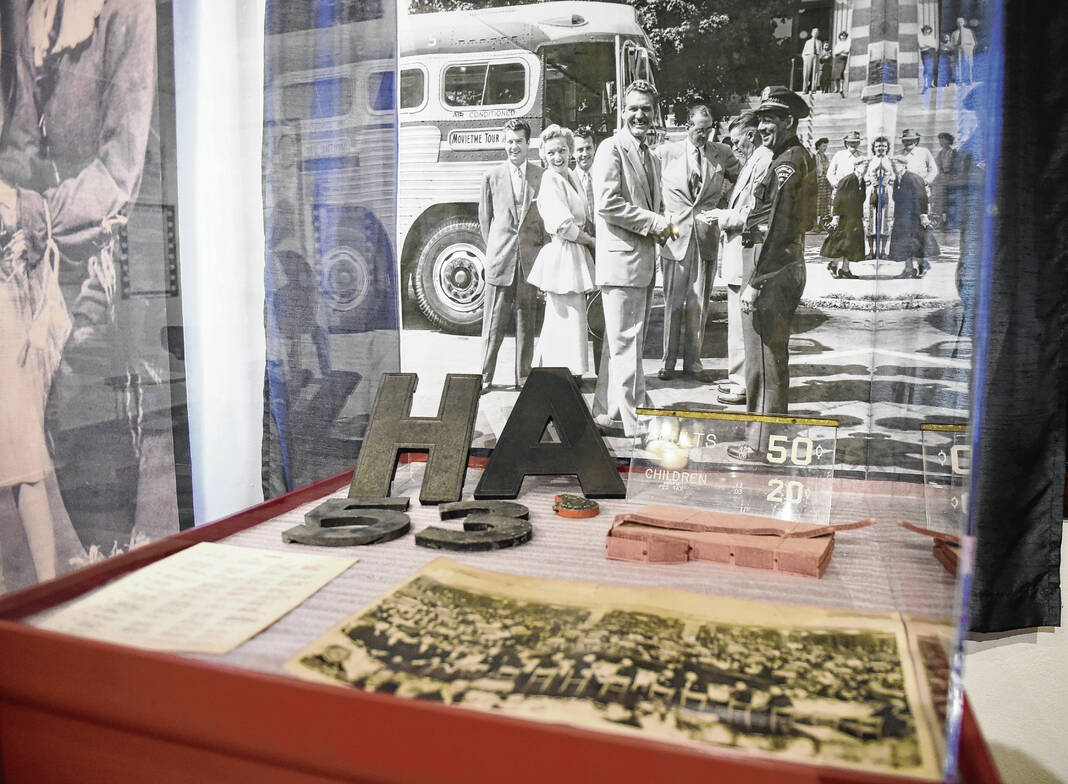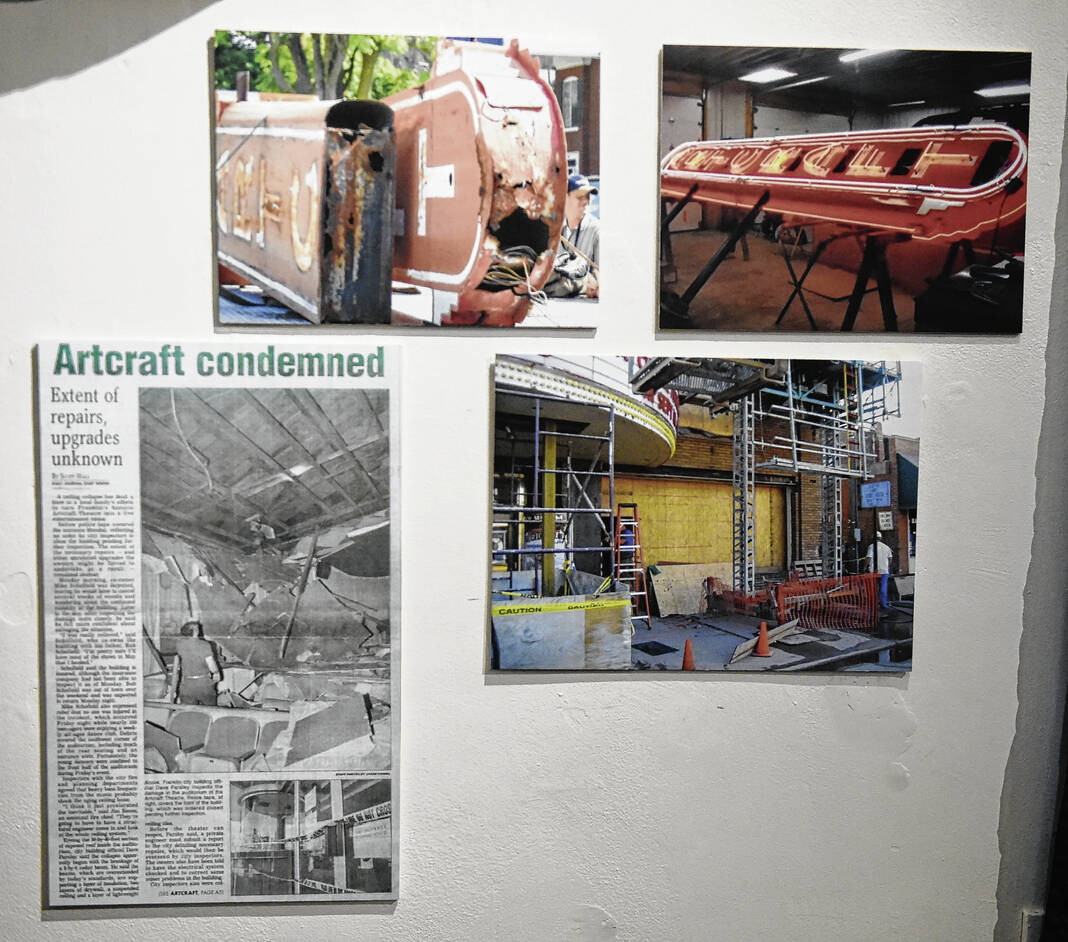
“Historic Artcraft Theatre: A Johnson County Icon,” which opened on Sept. 1 at the Johnson County Museum of History, tells the story of the 100-year-old Franklin theater, from its founding to its impact on generations of local residents to its restoration and revitalization in recent years.
RYAN TRARES | DAILY JOURNAL
In photographs, artifacts and movie paraphernalia, the golden age of cinema comes alive in the newest exhibit at the Johnson County Museum of History.
People can learn about how the Artcraft Theatre got started in Franklin, see a poster from the theater’s premier film, “The Old Nest,” and read about the first family of local cinema, the Rembusches.
Visitors can see the antique chairs that sat so many moviegoers over the decades, and the projector that kept them glued to the screen.
Most importantly, the exhibit establishes the importance of the Artcraft.
“It’s a fun exhibit, and so much fun to research how much the Artcraft has meant to the community,” said Emily Spuhler, curator for the Johnson County Museum of History. “It’s the anchor. It’s the anchor that helped Franklin change so much.”
To tell the story of the past 100 years, the Johnson County Museum of History has unveiled a new exhibit focusing on the history of the Artcraft Theatre. Mementos and memorabilia will focus on the creation of the theater, its outsized role in the cultural landscape of the county and how it has been reborn in recent years.
The exhibit opened on Sept. 1, coinciding with the upcoming “A Century of Cinema” centennial gala being planned at the Artcraft on Sept. 10.
“It’s been nice have a few very community-based exhibits this year,” said David Pfeiffer, executive director of the history museum. “Working the Artcraft for this exhibit, they were a huge resource with all of ledgers and stuff that they had; there’s been an incredible amount of information.”
The Artcraft Theatre has been a part of life for generations of Johnson County residents. From its opening in 1922 until 2000, it operated continuously in downtown Franklin. First with silent movies and vaudeville acts, then with the biggest hits Hollywood had to offer, the theater was the centerpiece of entertainment in the area.
But over time, the condition of the theater started to falter. The Artcraft closed as a full-time theater in July 2000, then was declared structurally unsafe in 2003.
But a band of local conservationists and film lovers banded together, and in 2004, Franklin Heritage purchased the theater and started its renovation.
Today, the Artcraft is a shining example of saving historic places, and it routinely draws visitors from all over central Indiana and the Midwest in general.
Spuhler wanted to tell this expansive story with the limited space she was given.
“We wanted to talk about how the Artcraft worked since it opened in Franklin,” she said.
More so than many other exhibits the museum has curated in the past, Spuhler relied on imagery from over the years to enhance the information being presented.
“The big thing I wanted to do with this exhibit was make it image-forward. When I think of cinema and this business that has been here for 100 years, I wanted to show how it was used over that time,” she said.
Displays and artifacts describe how local leaders brought a theater for vaudeville shows and silent movies to the city. Guests to the exhibit can read about the theater’s opening night, and see a photograph of the packed house.
A whole section is devoted to Trueman Rembusch, who bought the Artcraft in 1936 and helped make it a wild success.
The exhibit shows how the theater came the de facto event center for the region, hosting theatrical productions, concerts, even high school graduations.
“There were all of these things that go beyond it being used as a theater,” Pfeiffer said.
A significant portion of the exhibit discusses Franklin Heritage buying the closed theater in 2004 and the work — and funding — that has gone into restoring it to glory.
That has led to a revitalization of the downtown area, an aspect woven into the exhibit by talking to local business owners, Spuhler said.
“A number of people, specifically those who have lived here a long time or grown up here, have told me that the Artcraft was really the business that rejuvenated Franklin,” she said. “They were the pivotal piece of raising Franklin up and making it a destination.”


